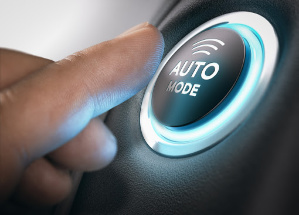When you are struggling to just get through each day without giving in to some crisis or major flare-up, you probably find yourself operating on autopilot: giving into the unconscious, habitual responses that you use to guide the hundreds of decisions and choices you make each day.
For example, perhaps a member of your staff comes to your office to see you about an idea he has for dealing with a client issue. You want to be open, listen, and let him share his proposal. But as he starts to outline his idea, you hear key words that raise a big red flag. You think “Been here before. Nope, this is not going to work.” You realize that his approach is not appropriate and will not be successful. Autopilot is now fully engaged.
Rather than hear him out, ask questions, and redirect his thinking to a more relevant solution, you react. You interrupt, tell him why his idea will not work, and explain what you want him to do instead. Result: he’ll give you what you want, instead of a possibly better and more innovative solution. He leaves your office deflated and discouraged, resentful that you hardly listened to him and that he is now doing what you want, not something he can feel ownership and pride in. It will be a cold day in a hot place before he’ll ever offer a new idea again. And you can bet he is telling the rest of his teammates about the entire episode.
The big takeaway here: you have lost the opportunity to build capacity in him as well as yourself to handle similar issues in the future. You are short-changing everyone involved in this transaction by choosing to react, rather than thoughtfully respond. Your natural inclination was to take the easy way out and let autopilot take over.
This approach is fine when you are brushing your teeth or tying your kid’s shoes, but not when you need to make conscious choices and connections with others. With all the demands on your time, your best intentions to be thoughtful and deliberate are often lost when you react, rather than respond, to people and situations.
Responding (taking time to stop, reflect, proceed) paves the way for discernment and a more thoughtful, intentional approach that allows you to add perspective and guide the focus towards the outcome. Reacting immediately puts you on autopilot, shifts the focus towards what to fix, and limits your choices. Key point: reacting while in autopilot mode doesn’t build capacity to deal with future issues. It favors past practices that are no longer relevant and creates an experience that will shut down future innovation.
There is no short-cut to becoming more intentional. It’s not easy to catch yourself in that moment before you react. But you can strive to be more aware when you start to feel frustration, anxiety, impatience. Stopping to think, even just for a split second, can make a huge difference in what happens next. Take a breath (literally!), count to ten, or take a drink of water to stall for time. Do nothing, say nothing. That space of a few seconds can be just enough time to produce a different, more generative response, one that makes both parties in the discussion better.
Taking the time to thoughtfully and intentionally respond is much easier said than done. Why? Because autopilot is the tool of choice when you feel stressed and overwhelmed. It is very seductive when you’re in the line of fire, and it masquerades as experience and effectiveness. Avoid this temptation—and see what happens next!



One thought on “How to Get Off Autopilot and Take Charge of Any Situation”